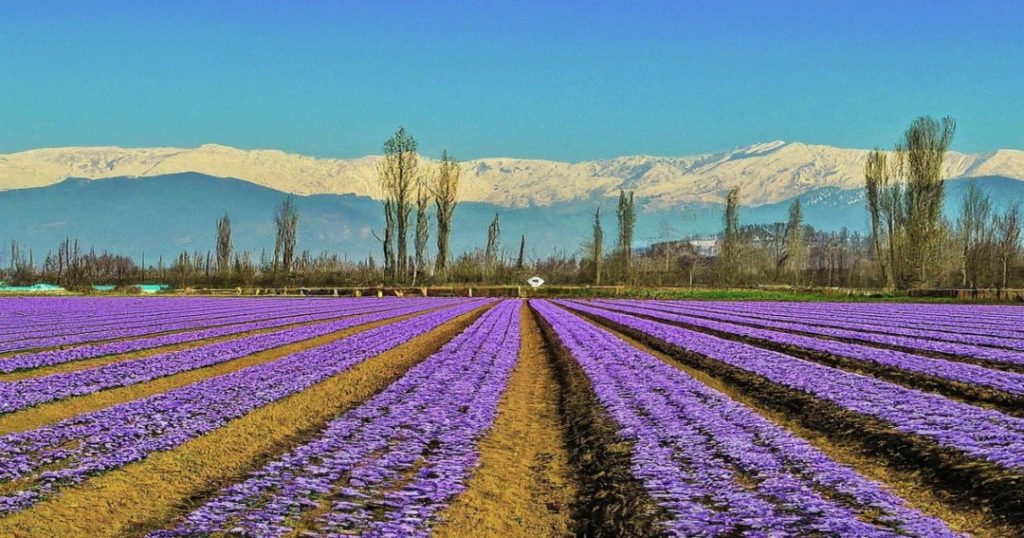Kashmir, often referred to as “Paradise on Earth,” is renowned not only for its breathtaking landscapes but also for its saffron fields. The region produces some of the finest saffron in the world, known for its vibrant color, distinct flavor, and aromatic fragrance. This blog explores the beauty and significance of the saffron fields in Kashmir, offering insights into this precious spice and its cultural importance.
1. The Beauty of Saffron Fields


The saffron fields of Kashmir bloom during the fall, typically from late October to early November, transforming the landscape into a sea of purple flowers. Farmers cultivate these flowers, known as Crocus sativus, to harvest their stigmas, which they collect and dry to produce saffron. As you walk through the fields, the vibrant hues of purple, combined with the backdrop of the majestic Himalayas, create a stunning visual experience that attracts visitors from all over the world.
2. Harvesting Saffron


Harvesting saffron requires a labor-intensive process that demands skill and precision. Local farmers, often women, hand-pick the delicate flowers early in the morning when they are still closed. This practice helps keep the stigmas intact and prevents damage from the sunlight. Each flower produces only three red stigmas, so it takes around 150,000 flowers to yield just one kilogram of saffron. This laborious process contributes to saffron’s reputation as one of the most expensive spices globally.
3. Saffron’s Culinary and Medicinal Uses


Kashmiri saffron shines in both culinary uses and medicinal properties. Chefs commonly use it in various dishes, including Kashmiri biryani and Kehwa, a traditional saffron-infused tea. Many people believe the spice has numerous health benefits, including improving mood, enhancing memory, and acting as an antioxidant. By incorporating saffron into your diet, you can add flavor and potential health advantages.
4. Saffron Tourism


Saffron tourism grows increasingly popular in Kashmir, with travelers eager to experience the beauty of the saffron fields firsthand. Many local farms offer guided tours, allowing visitors to learn about the saffron cultivation process and participate in the harvest. This unique experience provides insight into the agricultural practices of the region and highlights saffron’s significance in Kashmiri culture.
For more information on saffron in Kashmir and its importance, check out Incredible India.
5. Supporting Local Farmers


When you purchase Kashmiri saffron, you support local farmers and their traditional practices. Saffron cultivation plays a vital role in the economy of regions like Pulwama and Kishtwar, where many families depend on this crop for their livelihoods. By choosing authentic Kashmiri saffron, you help preserve the cultural heritage and farming traditions that generations have passed down.
Conclusion
The saffron fields of Kashmir are not just a feast for the eyes but also a symbol of the region’s rich cultural and agricultural heritage. Visiting these fields during the harvest season offers a unique opportunity to witness the beauty and labor behind one of the world’s most sought-after spices. Whether you’re a culinary enthusiast, a traveler, or someone interested in cultural experiences, exploring the saffron fields of Kashmir promises an unforgettable adventure that showcases the region’s natural beauty and agricultural traditions. Don’t miss the chance to experience this golden spice in its natural habitat!






